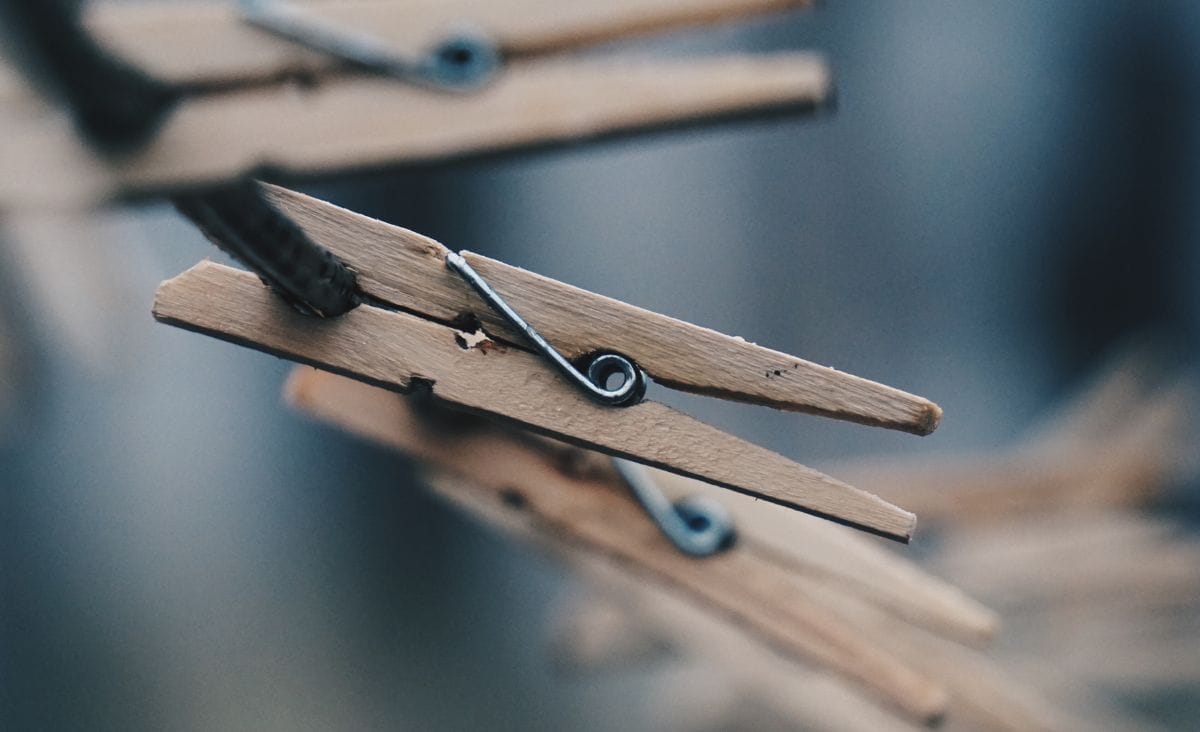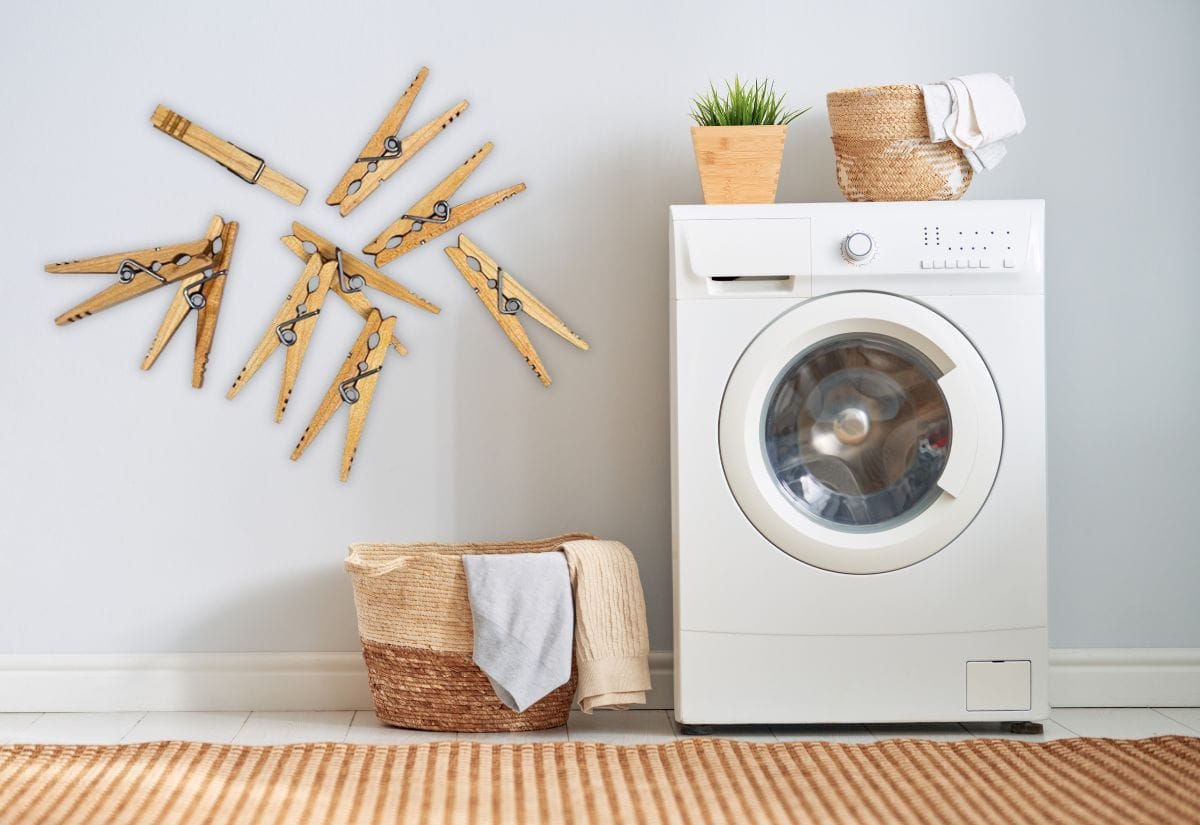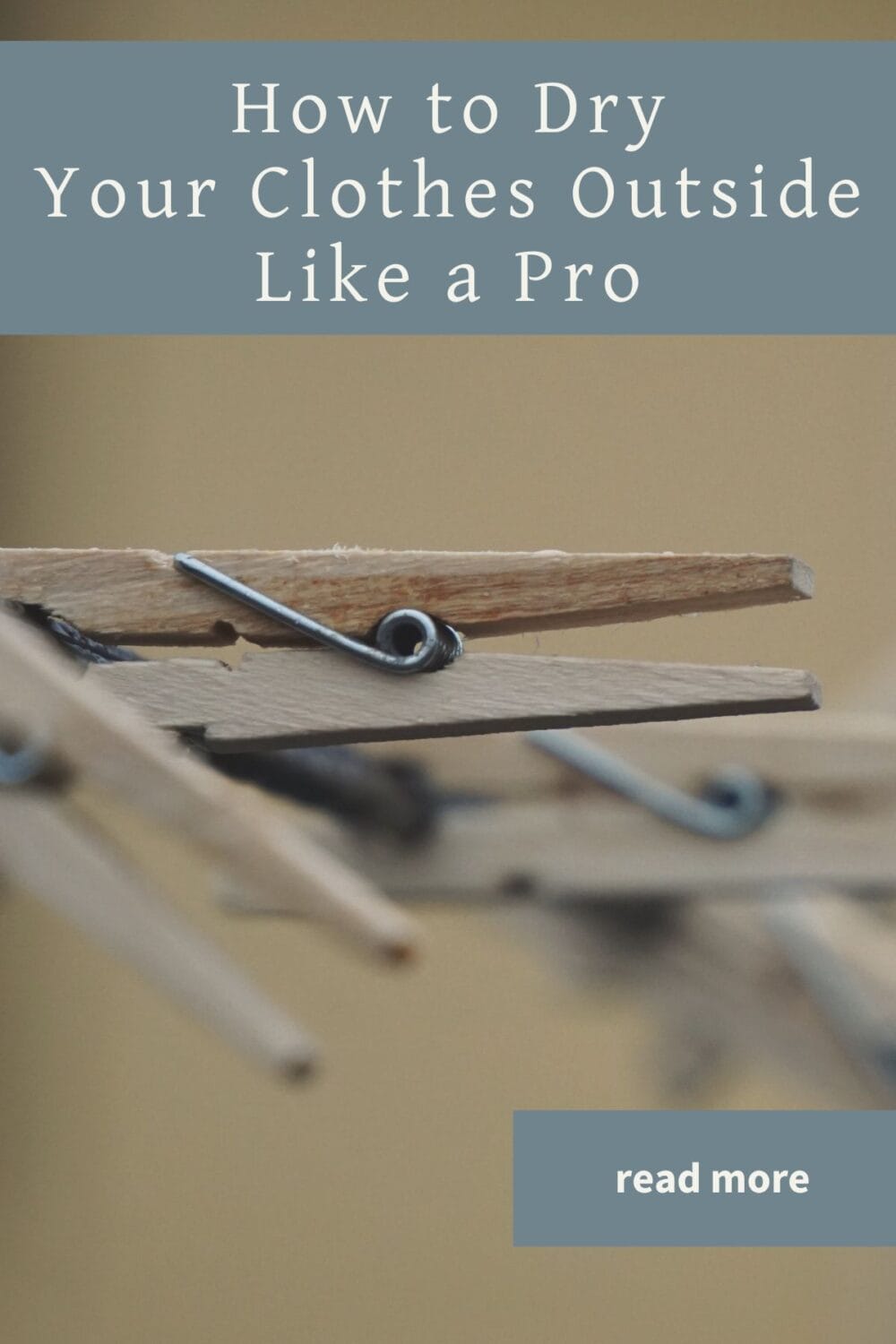Clothesline Efficiency: How to Dry Your Clothes Outside Like a Pro
Learn the right way to use a clothesline to save energy, keep your clothes from wearing out, and enjoy clean, sun-dried clothes.

Are you ready to love clotheslines even more? Whether you’re a seasoned pro or new to the game, my post on using a clothesline correctly will transform the way you think about laundry. Say goodbye to dryers that use a lot of electricity and learn how to dry your clothes on a line. Let us look at the best ways to use a clothesline to keep your clothes clean, long-lasting, and perfectly dry.
If you’ve read Line Drying Clothes in Winter, you know I’m an avid fan of my clothesline. There are a few tricks I’ve picked up along my clothesline journey, and I’m excited to share these tips and tricks with you today. Yes, line drying clothes can be as simple as flinging your clothes over a line, but with the right technique, you’ll see how amazing line drying really can be.
You might even take to bragging to your friends that you are a clothesline master. Don’t laugh; I do it.
Tip #1: Go with cotton lines.
Nylon and plastic lines may last longer than cotton without sagging, but they accumulate gunk on them. There is nothing worse than going out in public and discovering you have an odd greenish-brown line along the hem of your white shirt. This is the clothesline I use. It’s cheap, but it does the job.
Tip #2: Being obsessively organized pays off.
Hanging like items saves time, and when you become a Clothesline Jedi Master, you can fold as you pull things off the line. Keep towels with towels and shirts with shirts. One word of caution: hanging them together does not mean hanging them on the same line. If you have multiple lines in your setup, don’t hang all your towels on one cord. Instead, disperse the weight between the lines. I like to hang my towels right near the support so they don’t make the line sag.
Tip #3: Hang it opposite to how it’s worn.
If it’s a top, hang it from the bottom hem. If it’s a bottom, hang it from the waistband. If it’s a dress or one-piece Catwoman uniform, go with what your gut instincts tell you. Hanging from the correct area will prevent clothespin marks on the visible part of your clothes.
Tip #4: The lighter the color, the closer to the sun.
As mentioned in Line Drying Clothes in Winter, sunlight is a wonderful bleaching agent. Whites should be hung so they take advantage of direct sunlight. Darks should be hung towards the back to avoid fading. You may also want to turn your very dark clothes inside out to preserve the color.
Tip #5: Vinegar softens line-dried clothes.
If you add white vinegar to your rinse cycle, you can avoid that crispy feel that clothesline clothes seem to be plagued with. I personally enjoy the feel of a crisp, clean shirt (and I truly believe that line-dried jeans make you look more put-together), but I know it’s not for everyone.
Tip #6: “Snap” before hanging.
Although wrinkles are inevitable, you can eliminate them entirely by snapping your garments in the air before hanging them.
Tip: For best results, hang your laundry early in the morning. This allows your clothes to take advantage of the full strength of the sun throughout the day, speeding up drying time and ensuring a fresh scent. Plus, the morning air is often cooler and more pleasant for outdoor chores.
Tip #7: A cute apron goes a long way.
There are hundreds of clothespin bags on the market, but there are a few flaws with using a bag.
First, it’s only where you need it for the first few times you’re hanging. After that, you are running back and forth or holding pins in your teeth. The only exception would be if you have one of those lines that rotates so you can stay in one place and pull the clothes towards you or away from you.
The second problem with bags is that it’s easy to forget them outside. Clothespins should not be exposed to the elements when not in use. It seriously reduces their lifespan.
I like the cute aprons for holding pins, though any apron with pockets will do. The pins travel with you as you hang or remove clothes, and they come indoors when you do.
Here are some cute DIY aprons to try out:
- A European-Style Clothespin Apron from Mother Earth News
- Here’s a cute apron from My Byrd House that has lots of pictures to follow along with.
- This upcycled apron from Strangers & Pilgrims utilizes a handkerchief and napkin and can be made in minutes.
- I adore these pillowcase clothespin aprons from Life on the (Clothes) Pin.
- This clothespin apron, which uses old blue jeans for a backing and pockets, also has a great photo follow-a-long.
And don’t forget, bed sheets make great free or cheap fabric.
Tip #8: Sock hangers will actually save your sanity.
The sky is darkening, and the wind is picking up. You know it’s going to start raining soon. Socks take forever to put on the line, and when it seems it’s going to rain, they take forever to take off the line. Sock hangers allow you to pair up socks and hang them all together. When dry, bring the whole kit and caboodle inside for easy sorting. I have this sock hanger, which holds 26 pairs when they are hanging with their mates. It’s a bit flimsy, but keeping it out of the elements when not in use has kept it going for a few years now.
Tip #9: Hang items off items to save space.
We use unpaper towels on this homestead. They can take up a lot of space on the line, and I prefer to have them all in direct sunlight to bleach out ketchup stains and such. To save space, I hang them four or five long, securing the top of one to the bottom of another.
Tip #10: Not all clothespins are created equal.
It’s true. High-quality clothespins bring high-quality results. I can’t tell you how many packages of $1.99 Walmart clothespins I’ve gone through. Really, the cheap clothespins serve no purpose beyond keeping the bag of Reese’s Cups you have hiding in the freezer closed.
Here are a few things to look for when you are buying clothespins:
- Get a traditional style. Fancy pins may look cute, but no one will envy your line when you are out there picking up your underpants that blew all over your yard. The style that worked best 100 years ago still works best.
- Check the springs. Flimsy springs not only quit quickly, but they don’t hold heavier items such as jeans or towels.
- Don’t get softwood or plastic. Softwood tends to warp, and plastic is prone to breaking. Although plastic lasts longer than the cheap softwood clothespins you are able to buy at most big box stores, they will eventually snap from the strain of being opened.
- Get pins you can actually open. I bought some clothespins a while back that were very heavy duty, but it took two hands to open them. Imagine trying to hang your clothes when you need two hands on the pin. It isn’t graceful (or very successful). I like the ones with the little grooves on them.
Tip #11: Try Out Kevin’s Quality Clothespins.
If you may have caught on from tip number ten, I’m sort of a clothespin snob. Kevin’s Quality Clothespins have everything I look for in a clothespin and more. They are American, handmade by none other than Kevin himself. They are sealed with linseed oil, but as with any wooden pin, do not leave them on the line when not in use. The linseed oil helps preserve them, but wood is wood.

I was really impressed with the grip these babies had. I had all the towels out on the line, and the winds came on strong while I was away. I came home assuming that I would need to rewash them. I was wrong. Not only were they still on the line, but the wind made the towels super soft and fluffy. My little boy played with them when I wasn’t looking (he was building a robot out of them), and they stood up to his crafting. My Walmart ones never survive kid crafts.
I am certain that you will fall in love with these clothespins just as I did upon their first use. Kevin’s Quality Clothespins have a lifetime guarantee, so you can feel confident investing in these high-quality pins.
Frequently Asked Questions
If you’ve found value in this blog post and enjoyed reading it, why not share it with your Pinterest community? Pin the image below and spread the love!

Using a clothesline is not just a way to dry your clothes; it is a way of life that is good for the environment, your wallet, and your wardrobe. With the right techniques, like choosing cotton lines, organizing laundry types, and utilizing vinegar for softness, you’ll not only master the art of line drying but also enjoy the process. Remember that every load of laundry you hang up is a step toward living in a more eco-friendly and sustainable way.
What’s your top clothesline trick or hack that makes laundry day a breeze? Share your insights and experiences below!

